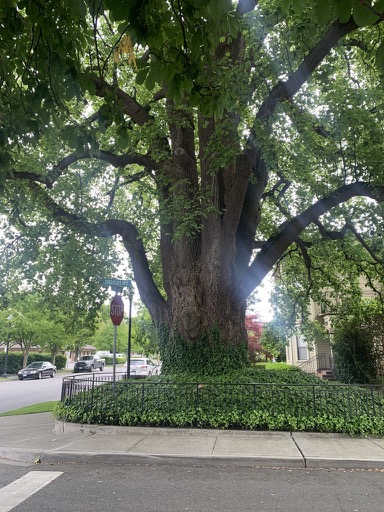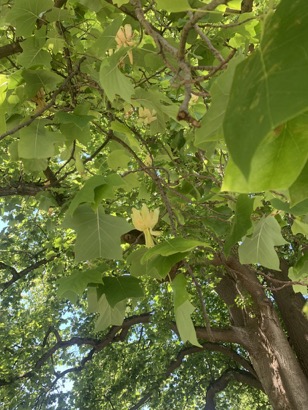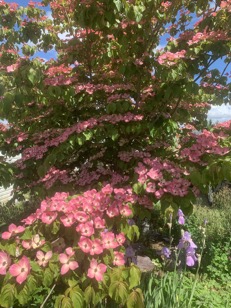The tulip tree
10/06/21 01:31

It is unknown whether the connection with George Washington’s estate is the reason for the large tulip poplar that grows at the corner of Cleveland and Snoqualmie streets in Mount Vernon Washington. The mature tree has been there a long time and it seems a bit unlikely that in the early days of the community, there would have been much attention paid to landscaping. Certainly there weren’t the extensive nurseries and plant sales that you can find at Lowe’s and Home Depot these days.
The actual history of the tree is a matter of speculation, with no one in Mount Vernon that we have encountered knowing the full story of the tree. Whatever the story, the magnificent tree dominates the corner across from the site of the current library building and the city parking lot. At one time, when the current city hall was under construction the house on that corner was leased by the city and housed the city planning division. That meant that care of the tree, including cleaning up all of those leaves each fall, fell to the City of Mount Vernon. The local story is that the city public works director wanted to have the tree removed when its roots broke up the surrounding sidewalk. It was decided, fortunately, that cutting down that tree would be political suicide and the sidewalk was relocated creating a wrap around the tree the extends into the right of way a bit.
The tree is the largest of its species in the State of Washington. It is significantly larger than the tree that one of the trees George Washington himself planted, dubbed “The Independence Tree.” It is likely that the conditions here in Mount Vernon, Washington, are even more conducive to the growth of the tree than the namesake of our town, the estate of George Washington.

In a City Council Meeting on April 10, 2002, Mayor Richendrfer signed an Arbor Day proclamation. In that proclamation the mayor reported that “The City has named the Tulip Tree as the Official City Tree because of its name, the tulip shape of its leaf, its stately qualities, and its historical significance as being one of the oldest planted trees in Mount Vernon and largest in the state.” The mayor’s proclamation further “urged all citizens to plant tulip trees, as well as other trees, to gladden the heart and promote well being of this and future generations.” The city has officially planted other tulip trees in town, including one at Hillcrest Park and another next to the reader board at First and Kincaid streets.
We frequently find ourselves at the library, picking up or returning books and meeting our son, who is its director. Our summertime activities include parking our car in the shade of the tree while we walk to the Post Office or take a stroll down the riverfront walk in downtown Mount Vernon. The glorious tree garners our attention every time we are in the area. I wondered what color the blossoms would be, and was perhaps a bit disappointed that they are mostly the same color as the leaves, with a bit of yellow in the center. They pale in comparison with the trees autumnal display of bright yellow before the leaves are dropped for the winter. And this tree has a lot of leaves to drop.
Large trees are part of the legacy of this region of the country. After living most of our lives in places where a 60’ tree is considered tall, we find ourselves looking up a lot around here as we wander through forests of Cedar, Douglas Fir and Hemlock. The rich soil along the Skagit River combines with abundant rainfall and mild weather to make this a great place for growing trees. Mount Vernon’s iconic tulip tree is one of the sights we will always remember from our time of living here.

We have received so much beauty from trees. In the words of the former mayor of the city, “to gladden the heart” is one reason for a tree. Our hears are indeed gladdened. When we find a home to call our own, one of the things we are sure to do is to plant a few trees.
